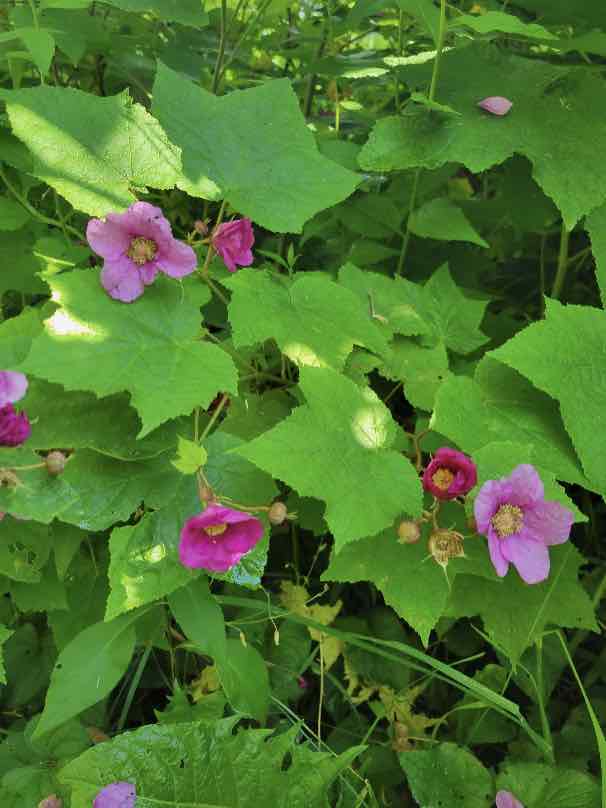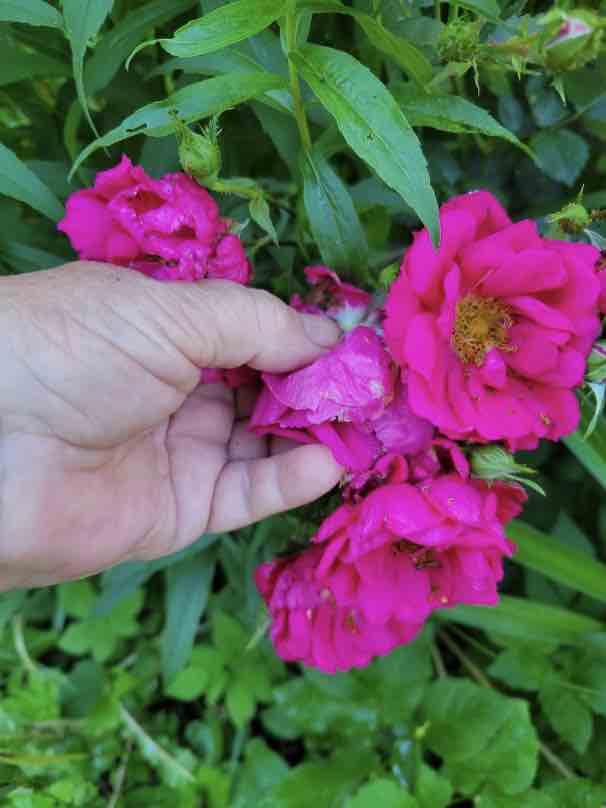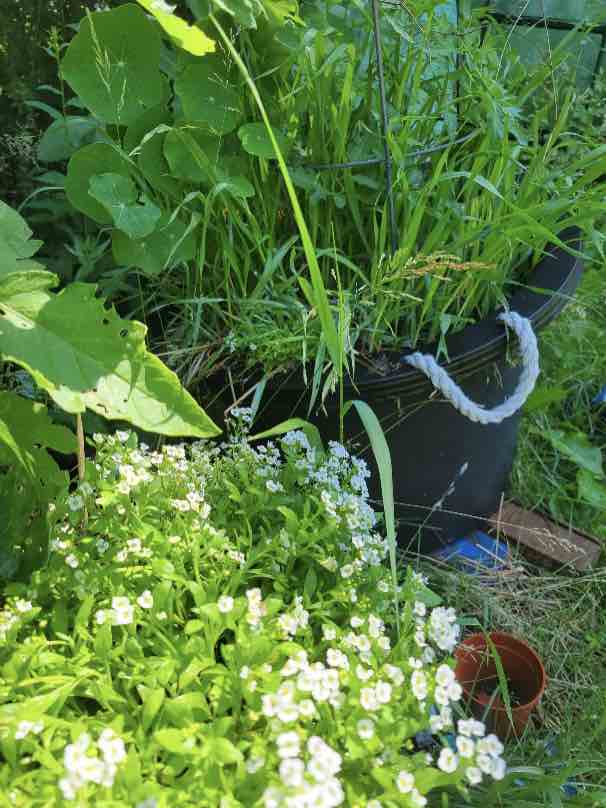Your cart is currently empty!
Diatomaceous Earth Keeps Insects Away
Diatomaceous earth is an organic substance that is effective at keeping insects away from crops and keeping soil and plants healthy.
Your cart is currently empty!
Deadheading flowers is a very important job to do in the garden as it helps to increase the number of blooms on your plants.
This morning dawned warm and humid. I am finding the quiet buzz of the insects and the chorus of birds to be relaxing as I prepare for the day. Breakfast with the too-many cats is peanut butter on toast with gooseberry jelly. If you have made gooseberry jelly one of the most fascinating things about it is how the pale-yellow gooseberry juice gives you a ruby-red jelly once it sets. Like magic.
My thimbleberries have started blooming. Thimbleberries (rubus parviflorus) are an edible native. They have a soft fruit that resembles raspberries and have many seeds. They would be fine for jellies and jams. I like to grow these berries as the flowers are beautiful and rose-like and they attract pollinators; but I leave the fruit for the birds. They are a bit prickly, so be careful. My thimbleberries grow around my small pond where I have my pots of marsh marigolds and other bog-type plants.

Deadheading is a very important job to do in the garden as it helps to increase the number of blooms on your plants. The iris and peonies have been deadheaded and today I am deadheading my roses. I carefully examine the roses and look for the ones that have expired. Using sharp pruners, I clip off the dead rose. After the end of July, I stop removing the dead roses because I treasure the rosehips that develop once the blooms have finished. If you deadhead your roses, you will find that you get more roses! I feed my roses as I feed my tomatoes, but I usually stop feeding them by mid-August so that they have a chance to prepare for winter. My roses attract an amazing number of pollinators, and these pollinators help to increase the production in my vegetable garden.
The picture below shows my Henry Kelsey rose. He is a Canadian Explorer rose and I call him the ‘canary in the coal-mine.’ If there are any rose pests around, they all go to Henry first. I deal with them there and am then aware to watch for them on my other roses.

The tomatoes I am growing in pots are doing well. They are planted in a mixture of topsoil and compost. My compost consists of a mixture of straw bedding, chicken manure and decomposed kitchen waste and weeds. A lot of this matter contains seeds, and they tend to germinate and grow along with my tomatoes. Many of my pots now contain weeds. I weed out most of the grasses and weeds that grow in my pots, but I leave some. I find that they provide a green mulch and distract pests from my tasty tomatoes. While the pots may not look as attractive, there is no reason to worry if a few weeds are there. Beauty is a very personal thing.

It is humid and hot, and rain would be welcomed. I know that the weather will change no matter what I might want. I am making sure to rest between garden tasks and moving at a slow and steady rate. Remember this is not a competition, take the time to sit, sip a cold glass of water and appreciate each sweet, caressing breeze as you become part of your garden. Judith (Email: sghorticultural@gmail.com) Veggie Bites are available at https://sghorticultural.wixsite.com/website or https://gardeningcalendar.ca/articles/veggie-bites/
Diatomaceous earth is an organic substance that is effective at keeping insects away from crops and keeping soil and plants healthy.
Learning interesting tidbits of gardening facts can be as much fun as gardening itself. Share them with friends or intrigue your neighbour one day.
Learn about winter sowing, a seed-starting method that mimics nature's cold stratification cycle, for successful germination and healthy plant growth.
Learn how to protect your yards and gardens from aphids with expert tips from a pest control technician in Oklahoma.
Burro’s tail plant is an eye-catching, high-impact, low-maintenance plant that works well in both indoor and outdoor hanging pots.
How do you know what to use to amend your soil or how to get the best nutrients for growing vegetables in soil or hydroponics?
GardeningCalendar.ca gets some funding from advertisers. If you click on links and advertisements at no cost to you, the site may receive a small commission that helps fund its operation.
© 2025 J&S Calendars Ltd.
Leave a Reply
You must be logged in to post a comment.